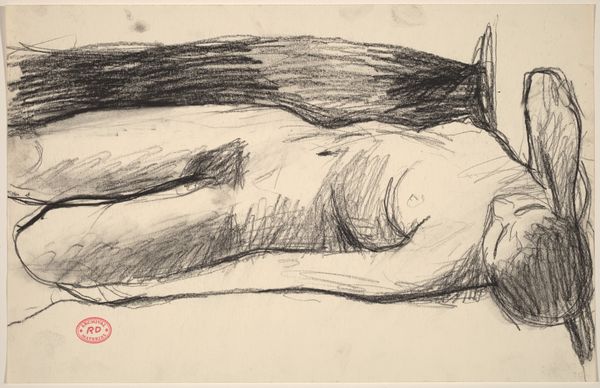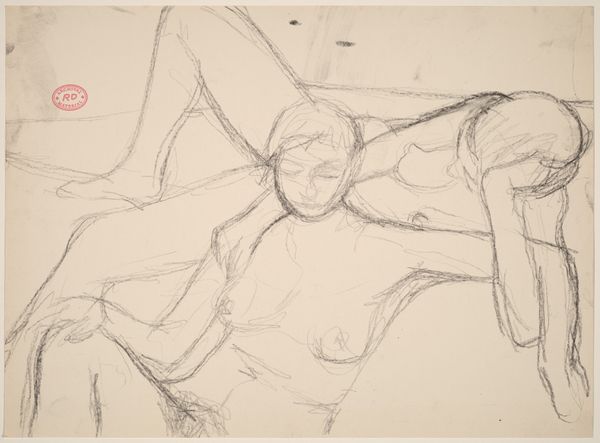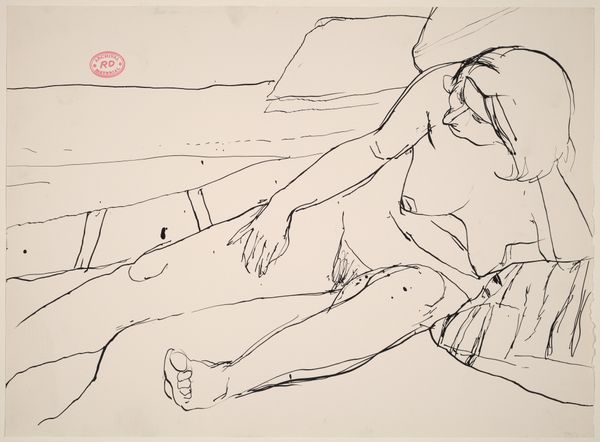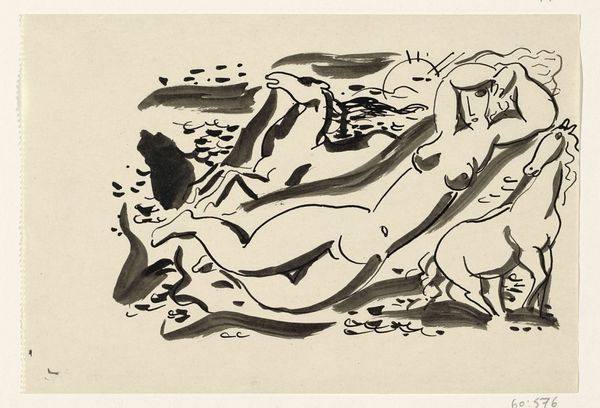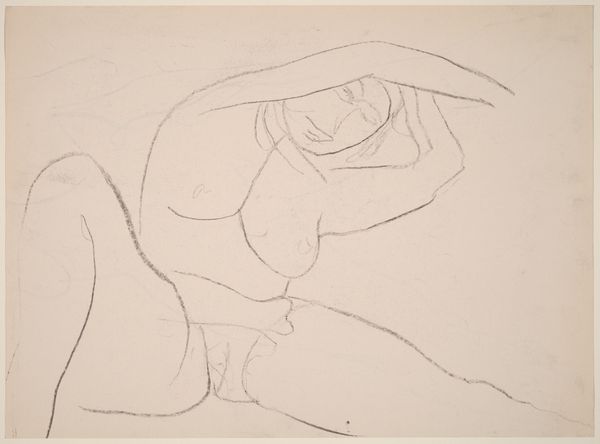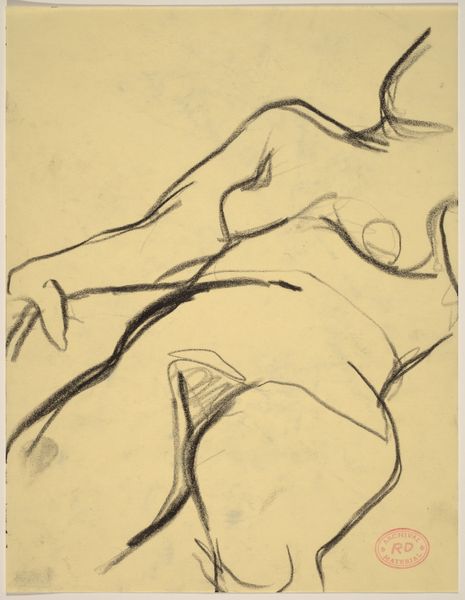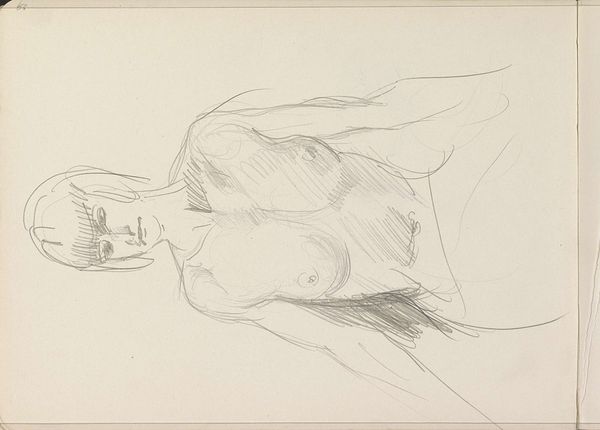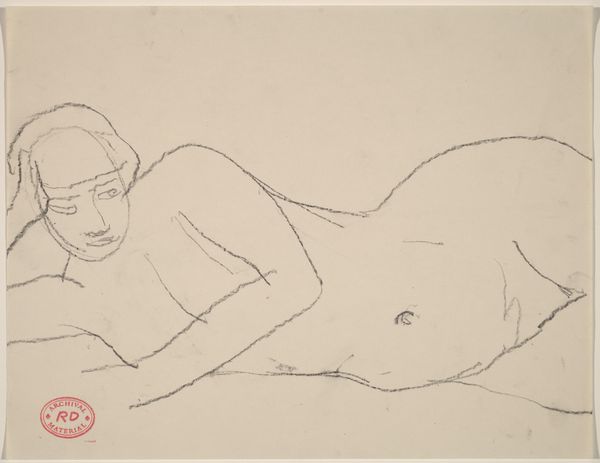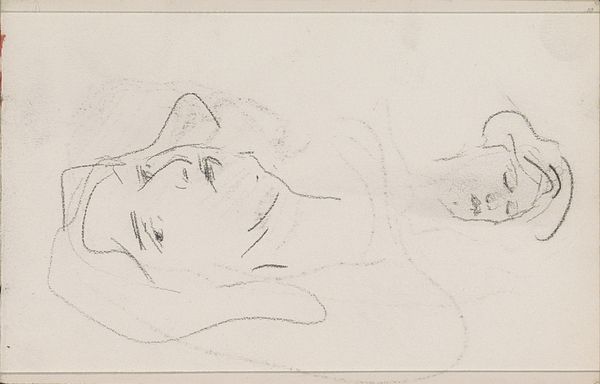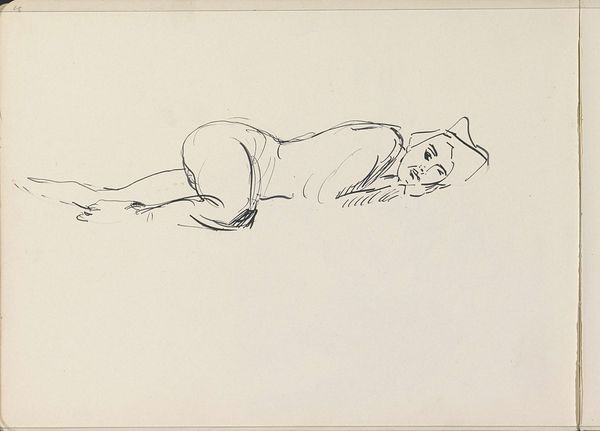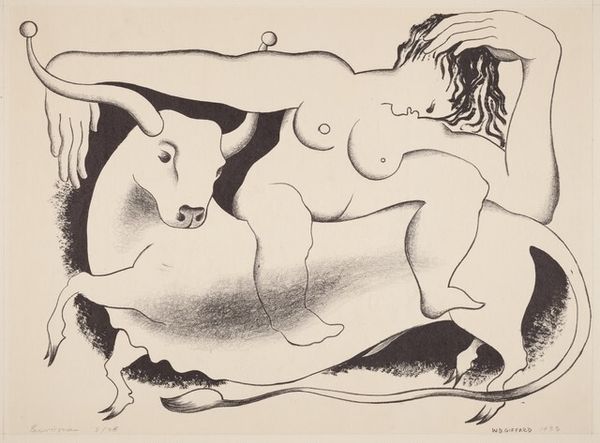
Dimensions: height 560 mm, width 750 mm
Copyright: Rijks Museum: Open Domain
Editor: This is Leo Gestel’s "Liggende naakte vrouw met paarden," or "Reclining Nude Woman with Horses," created sometime between 1930 and 1931. It's a charcoal drawing that strikes me as both classical and surreal. What connections do you see between the subject matter and the socio-political climate of the time it was made? Curator: Well, consider the period. It’s between the wars, a time of immense social upheaval and evolving attitudes toward sexuality and the body, particularly female bodies. Gestel places the reclining nude within a symbolic landscape featuring horses. What do you think the combination suggests in terms of public perceptions of beauty and power during this era? Editor: It seems like a conscious commentary on both vulnerability and freedom, perhaps even an assertion of female agency placed alongside untamed nature, something that was both admired and repressed? The lines are bold but the expression on the woman’s face is very serene, almost melancholy. Curator: Precisely. The Dutch art world during this period was reckoning with both traditional expectations of the female form and the avant-garde movements that challenged those norms. Does the artistic choice to situate her with the horses feel like a rejection of traditional objectification or perhaps a reimagining of feminine ideals within modern sensibilities? Gestel gives his figures more agency by placing them in modern styles, while also representing old subjects. What are your thoughts on that? Editor: That makes a lot of sense. Maybe he's trying to elevate this nude by contrasting her with the active horses in a subtle act of defiance. I hadn’t really thought about the artistic climate, but it makes the drawing much more impactful. Curator: Understanding the public and critical dialogues around art provides us with deeper insight not only into the intentions of the artist, but the society in which the artwork lived and continues to live. I find Gestel's play with modern style and the old masters gives this work an everlasting appeal. Editor: I’ll definitely be looking at art history timelines with a different perspective from now on! This context adds another layer to understanding Gestel's work and artistic style.
Comments
No comments
Be the first to comment and join the conversation on the ultimate creative platform.
